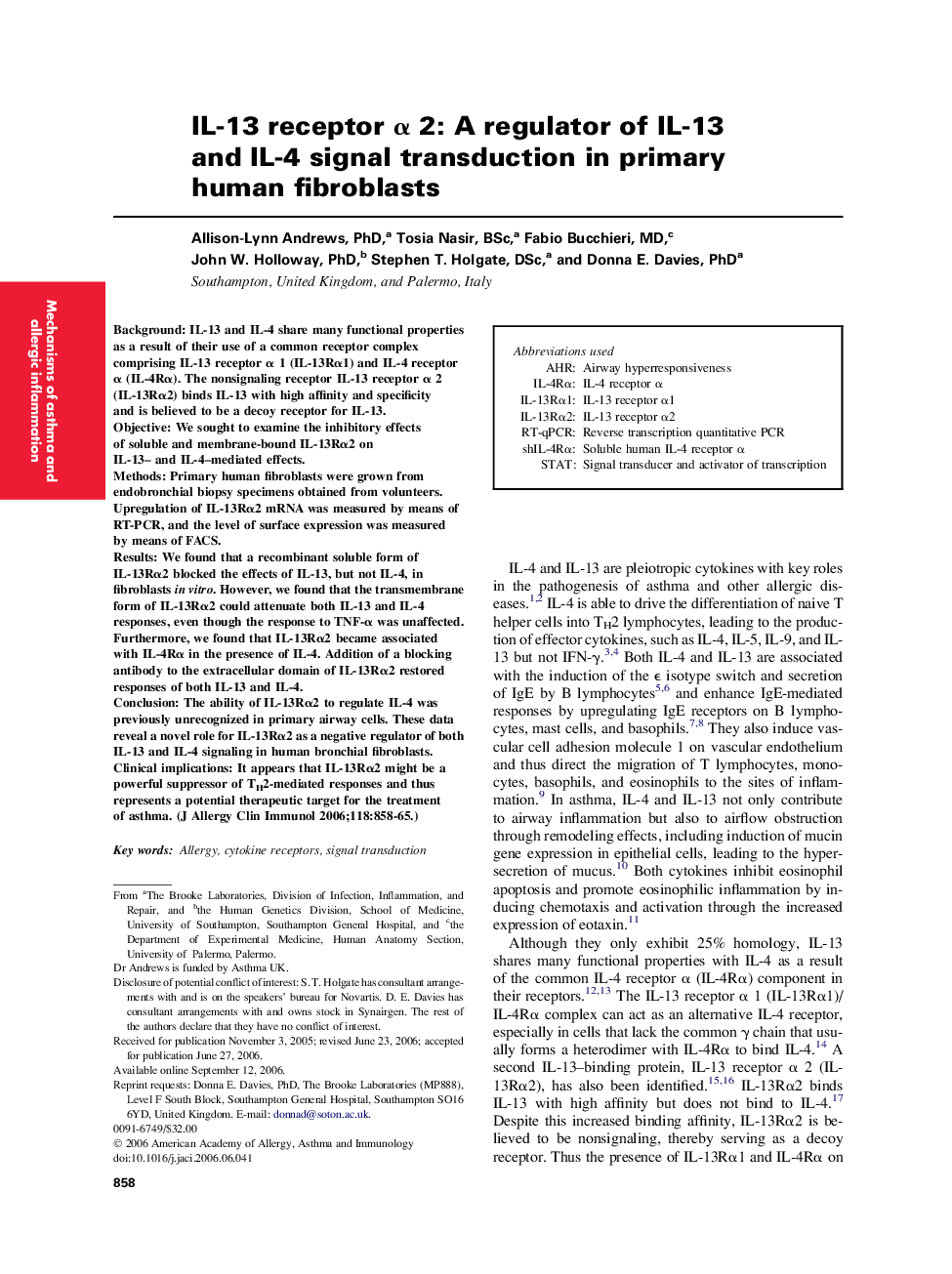| Article ID | Journal | Published Year | Pages | File Type |
|---|---|---|---|---|
| 3202603 | Journal of Allergy and Clinical Immunology | 2006 | 8 Pages |
BackgroundIL-13 and IL-4 share many functional properties as a result of their use of a common receptor complex comprising IL-13 receptor α 1 (IL-13Rα1) and IL-4 receptor α (IL-4Rα). The nonsignaling receptor IL-13 receptor α 2 (IL-13Rα2) binds IL-13 with high affinity and specificity and is believed to be a decoy receptor for IL-13.ObjectiveWe sought to examine the inhibitory effects of soluble and membrane-bound IL-13Rα2 on IL-13– and IL-4–mediated effects.MethodsPrimary human fibroblasts were grown from endobronchial biopsy specimens obtained from volunteers. Upregulation of IL-13Rα2 mRNA was measured by means of RT-PCR, and the level of surface expression was measured by means of FACS.ResultsWe found that a recombinant soluble form of IL-13Rα2 blocked the effects of IL-13, but not IL-4, in fibroblasts in vitro. However, we found that the transmembrane form of IL-13Rα2 could attenuate both IL-13 and IL-4 responses, even though the response to TNF-α was unaffected. Furthermore, we found that IL-13Rα2 became associated with IL-4Rα in the presence of IL-4. Addition of a blocking antibody to the extracellular domain of IL-13Rα2 restored responses of both IL-13 and IL-4.ConclusionThe ability of IL-13Rα2 to regulate IL-4 was previously unrecognized in primary airway cells. These data reveal a novel role for IL-13Rα2 as a negative regulator of both IL-13 and IL-4 signaling in human bronchial fibroblasts.Clinical implicationsIt appears that IL-13Rα2 might be a powerful suppressor of TH2-mediated responses and thus represents a potential therapeutic target for the treatment of asthma.
